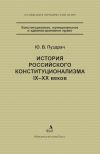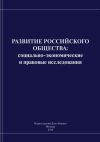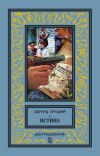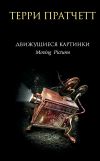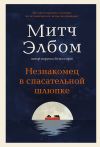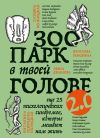Текст книги "Английский язык для студентов заочной формы обучения"

Автор книги: Татьяна Минакова
Жанр: Иностранные языки, Наука и Образование
сообщить о неприемлемом содержимом
Текущая страница: 4 (всего у книги 14 страниц) [доступный отрывок для чтения: 5 страниц]
2.2.7.1 Задание 1. Прочитайте и запомните следующие слова и словосочетания:
advertiser – рекламный агент;
prediction – прогноз;
opinion poll – опрос общественного мнения;
to depend on/upon – зависеть от;
to make a decision – принять решение;
to refer to – ссылаться на, обращаться;
to interpret – перерабатывать, объяснять;
treatment of data – обработка данных;
investigation – исследование;
representative – показательный, наглядный;
comprehensive – исчерпывающий;
to improve – улучшать;
raw data – сырые данные;
ballot – избирательный бюллетень;
item – единица совокупности;
to consider – рассматривать;
observation – наблюдение;
infinite – бесконечный;
finite – конечный;
to conduct – провести;
census – перепись населения;
to draw conclusion – сделать вывод;
to obtain – получать;
result – результат;
index – индекс;
report – доклад;
method – метод;
data – данные;
to collect – собирать;
to analyze – анализировать;
numerical – цифровой;
bureau – бюро;
accurate – точный;
gigantic – гигантский;
generalization – обобщение;
to select – выбирать;
to present – представлять;
graph – диаграмма;
chart – таблица.
2.2.7.2 Задание 2. Прочитайте текст А переведите его письменно
Text A.
Anyone who listens to the radio, watches TV, reads newspapers, books, magazines can not help but be aware of statistics. Statistics appears in the claims of advertisers, in predictions of election results & opinion polls & in business reports. Every science depends to some extent upon gathering of data by statistical methods On the basis of statistics important decisions are made. Statistical techniques are used extensively in marketing, accounting, finance, international trade, economics, legislation, and other fields.
Statistics is the body of principles and methods that has been developed for collecting, analyzing, presenting and interpreting large masses of numerical data. Without statistical treatment of data there would be no way to put facts together to see what they mean.
The results of statistical investigations may sometimes be stated in a single sentence, as in weather forecasts. Usually they are organized in the form of numerical tables, graphs or charts.
Statistical data are usually collected in one of the following ways:
1) by consulting existing source of material, such as periodicals and newspapers, or reports from industries , government agencies and research bureaus;
2) by setting up a survey and collecting data at first hand from individuals or organizations;
3) by conducting scientific experiments, measuring or counting under controlled conditions.
Raw data must be collected in such a way that it is accurate, representative and as comprehensive as possible. Statistical treatment of data can not in any way improve the basic validity or accuracy of raw data.
The main aim of statistics is to find out something about population. A population, from a statistician's point of view, may consists of individuals– such as all the students in the Orenburg State University or all the inmates at Attica prison– or it may also consists of objects, such as all the automobiles produced by Ford company. A population may also consists of a group of measurements, such as all the heights of the basketball players in the NBA. Note that a population in the statistical sense of the word does not necessarily refer to people.
Usually it is not possible to gather data about all possible cases in a population. Some population are infinite. Others , though finite, are so large that it would take too much time or cost too much to collect data on each unit in them (e.g. Every ten years the United States government conducts census of the whole population of the USA, but it is a gigantic and costly undertaking.)
The statistician usually gets the information from a relatively small number of cases called sample! From the cases in the sample he/she makes generalizations about the whole population.
The cases in the sample must be representative of the whole population, otherwise the conclusion drawn from the sample would not be valid for the whole population.
The size of the sample is a factor too. Other things being equal, a larger sample is better than the smaller one. However, excellent results can be obtained with small samples that are properly set up. Most public opinion surveys are conducted on samples that are made as representative as possible by means of stratified sampling techniques. It is a special techniques of dividing country into various layers (strata). The aim of this techniques is to make proportions in the sample the same as in general population.
Basic to all sampling techniques is the idea of randomness. It means that any item of the population is equally likely to be included in to the sample.
2.2.7.3 Задание 3. Ответьте на вопросы по тексту А
1 Were does statistics appear?
2 Where are statistical techniques used?
3 How are the results of statistical investigations organized?
4 What ways are statistical data usually collected?
5 What is the main aim of statistics?
6 Is it possible to gather data about all possible cases in population?
7 What does the term “sample” mean?
8 When would the conclusion draw from the sample be valid for the whole population?
9 What kind of sample is better?
10 What does “randomness” mean?
2.3 Тексты III семестра
2.3.1 Тексты для студентов специальности «Юриспруденция»2.3.1.1 Задание 1. Прочитайте и запомните следующие слова и словосочетания:
security – безопасность;
organs of inquiry – следственные органы;
to establish – установить;
to determine – определять;
to receive – получать;
for instance – например;
to commence – начинать;
preliminary – предварительный;
to detain – задерживать;
a suspect – подозреваемое лицо;
to testify – давать показания;
available – доступный;
persons in office – должностные лица;
to vest – облагать (полномочиями);
to safeguard – охранять;
procedure – процедура.
innocence – невиновность;
correct – правильное (решение);
testimony – показания;
the injured party – Потерпевшая сторона;
inquire – спрашивать, наводить справки;
exhibit – вещественное доказательство;
record – запись;
to request – запрашивать;
participant – участник;
erasure – исправления;
alteration – изменения;
to be aware of– знать;
relevant – относящийся;
at one's disposal – в … распоряжении.
2.3.1.2 Задание 2. Прочитайте тексты А, В переведите их письменно
Text A. General Rules
The state combats crime through the courts, the Procurator's Office, investigators, 'state security organs militia and other organs of inquiry. They have to perform a series of acts to establish the fact of the crime, discover the offender and determine the penalty to be imposed on the strength of criminal law.
After receiving information that a crime has been committed, the investigator, for instance, commences the preliminary investigation. He inspects the place of the crime, summons and questions witnesses, detains 'suspects, etc. During the investigation of a criminal case, he has the right to demand of citizens that they should take part in examination and searches, and testify on the facts known to them, and of persons in office that they make available certificates and documents, etc. The organs of the militia, the investigator, the procurator and the court may make such demands on persons in office and other citizens who are summoned to take part in original proceedings.
Criminal procedure is investigation of criminal cases by organs of the militia, preliminary investigation and the Procurators Office, arid trial by the court.
Text B. Evidence
Before a decision is made on the guilt or innocence of the accused the circumstances of the case must be brought to light.
The investigator and the court base their conclusions concerning, the guilt or innocence of the accused on verification and assessment. Evidence in a criminal case is facts on the basis of which the organ of inquiry, the investigator and the court establish in accordance with the law, the existence or absence of a socially dangerous act, the guilt of the person committing the act, and other circumstances of importance in making a correct decision in the case.
The investigator, the organs of the militia, the procurator and the court establish the facts in case from testimony of witnesses, the injured parties, suspects, accused, the opinions of experts, exhibits, the records of the investigation and court proceedings, and other documents.
The investigator, having received the information that a crime has been committed, inquires as to the persons who may be of help to him in establishing the circumstances of the case and summons them as witnesses. To obtain exhibits the investigator inspects the place of the crime and makes searches seizures. He requests written documents from state establishments and persons in office.
For the evidence collected by the investigator to be valid in court it must be presented in the form of such documents as records of the interrogation, search inspection, etc. The law requires all documents of investigation to be signed by witnesses, the investigator and other participants in the case, and to be without erasures, alterations, and etc.
The collection of evidence before the trial is performed in the preliminary investigation. On more complicated cases the investigation is carried out by investigators, and otherwise, by the organs of the militia. To obtain evidence the investigator takes steps to find eye witnesses of the crime, obtain exhibits, etc.
The testimony of witnesses is a type of evidence, a witness is a person who is aware of facts relevant to a criminal case.
Upon receiving the summons, the witness must appear before the investigator or in court. Of he fails to appear without good reason he may be forcibly brought through the militia and is criminally responsible for failure to appear. Of the duty of the witness to give all the information at his disposal concerning the case and the accused.
The indictment is the culminate stage of the investigation in which the investigator sets forth particulars of the crime and the evidence collected in the case, and specifies the article of the criminal code covering the acts of the accused.
2.3.1.2 Задание 3. Ответьте на вопросы по текстам А, В
1 What does the state combat crime through?
2 What does the investigator commence after receiving information that a crime has been committed?
3 What right has the investigator during the investigation of a criminal case?
4 What does the term “criminal procedure” mean?
5 What it the evidence in the criminal case?
6 Where does the court establish the fact in case from?
7 Where does the collection of evidence performed?
8 What steps does the investigator take to obtain evidence?
9 What is the duty of the witness?
10 What is the culminate stage of the investigation?
2.3.2 Тексты для студентов специальностей «Бухгалтерский учет, анализ и аудит», «Финансы и кредит»2.3.2.1 Задание 1. Прочитайте и запомните следующие слова и словосочетания:
assets – активы (баланса);
eguities – активы (предприятия);
claims – претензии; иски;
equation – уравнение;
liabilities – пассив; задолженности;
owner's equity – собственный (акционерный) капитал (компании); consumption – потребление; расход;
entity – организация; предприятие;
cash inflows (receipts) – денежные поступления;
cash register – кассовый журнал;
merchandise – товары;
accounts payable – счета, подлежащие оплате;
note payable – вексель к оплате; дебиторская задолженность;
wages payable – зарплата к выплате;
sales taxes – налоги с оборота;
real estate taxes – налоги на недвижимое имущество;
total assets – общая стоимость имущества; сумма баланса;
ownership claim – имущественный иск;
to subtract – вычитать;
remainder – остаток;
residual equity – остаточные активы;
drawing – снятие (денег со счета); получение кредита;
revenues – доходы; доходные статьи бюджета;
commissions – комиссионные;
feel – гонорар;
royalty – право на земельную собственность;
expenses – расходы;
cash outflow – отток денег;
net income – чистая прибыль;
net loss – общий убыток;
to result in – кончаться; иметь результатом;
to result from – происходить в результате.
2.3.2.2 Задание 2. Прочитайте тексты А, В, С, переведите их письменно
Text A. Assets
Assets are resources owned by a business. Equities are rights or claims against these resources. Thus, a company that has $ 300,000 of assets also has $ 300,000 of claims against these assets. This relationship can be shown in equation form as follows:

Equities may be further subdividied into two categories: claims of creditors and claims of owners. Claims of creditors are called liabilities. Claims of owners are called owner's equity. The equation above is then expanded as follows:

This equation is referred to as the basic accounting equation. Assets must equal the sum of liabilities and owner's equity. Because creditor's claims are paid before ownership claims if a business is liquidated, liabilities are shown before owner's equity in the basic accounting equation.
The accounting equation applies to all economic entities regardless of size, nature of business or form of business organization. Thus, it applies to a small proprietorship such as a corner grocery shop as well as to a giant corporation. This equation provides the framework for recording and summarizing the economic events of a business enterprise.
Assets.
As indicated above, assets are resources owned by a business. Thus, they are the things of value used in carrying out such activities as production, consumption and exchange. The common characteristic possessed by all assets is the capacity to provide future services or benefits to the entities that use them. In a business enterprise, that service potential or future economic benefit eventually results in cash inflows (receipts) to the enterprise.
For example, the enterprise Campus Pizza owns a delivery truck that provides economic benefits because it is used in delivering pizzas. Other assets of Campus Pizza are tables, chairs, cash register, oven, and, of course, cash.
Text B. Liabilities
Liabilities are creditorship claims on total assets. Put more simply, liabilities are existing debts and obligations. For example, businesses of all sizes and degree of success usually find it necessary to borrow money and to purchase merchandise on credit. Campus Pizza, for instance, purchases cheese, sausage, flour and beverages on credit from suppliers; these obligations are called accounts payable. Additionally, Campus Pizza has a note payable to First National Bank for the money borrowed to purchase its delivery truck. Campus Pizza may also have wages payable to employees, and sales and real estate taxes payable to the local government. Persons or entities to whom Campus Pizza ows money are called creditors.
Most claims of creditors attach to total enterprise assets rather than to the specific assets provided by the creditor. In the event of nonpayment, creditors may legally force the liquidation of a business. In that case, the law requires that creditor claims be paid before ownership claims.
Owner's Equity.
The ownership claim on total assets is known as owner's equity. It is equal to total assets minus total liabilities. Here is why: the assets of a business are supplied or claimed by either creditors or owners. To determine what belongs to owners, we therefore subtract creditors' claims – the liabilities – from assets. The remainder – owner's equity – is the owner's claim on the assets of the business. Since the claims of creditors take precedence (приоритет) over ownership claims, the latter are often referred to as residual equity.
In proprietorships, the principal subdivisions of owner's equity are capital, drawings, revenues and expenses.
Capital.
Capital is the term used to describe the owner's investment in the business. An investment made in the business increases capital. It follows that total owner's equity increases as well.
Drawings.
An owner may withdraw cash or other assets during the accounting period for personal use. These withdrawals could directly decrease capital. Drawings decrease total owner's equity.
Revenues.
Revenues are the gross increase in owner's equity resulting from business activities entered into for the purpose of earning income. Generally, revenues result from the sale of merchandise, the performance of services, the rental of property, and the lending of money.
Revenues usually result in an increase in an asset. They may arise from different sources and are identified by various names depending on the nature of the business. Campus Pizza, for instance, has two categories of sales revenues – pizza sales and beverage sales. Other titles for and sources of revenue common to many businesses are: sales, fees, services, commissions, interest, dividends, royalties, and rent.
Text C. Expenses
Expenses are the cost of assets consumed or services used in the process of earning revenue. Expenses are the decreases in owner's equity that result from operating the business. Expenses represent actual or expected cash outflows (payments). Like revenues, expenses take many forms and are identified by various names depending on the type of asset consumed or service used. For example, Campus Pizza recognizes the following types of expenses: cost of ingredients (meat, flour, cheese, tomato paste, mushrooms, etc.); cost of beverages; gas and water expense, telephone expense; delivery expense (gasoline, repairs, licenses, etc.); supplies expense (napkins, detergents, aprons, etc.); rent expense; interest expense); and property tax expense.
In summary, the principal sources (increases) of owner's equity are (1) investments by owners and (2) revenues from business operations. In contrast, reductions in owner's equity are a result of (1) withdrawals of assets by owners and (2) expenses. Net income results when revenues exceed expenses; conversely, a net loss occurs when expenses exceed revenues.
2.3.2.3 Задание 3. Ответьте на вопросы по текстам А, В, С
1 What is the difference between assets and equities?
2 Claims of creditors are called liabilities, aren't they?
3 Must assets equal the sum of liabilities or owner's equity?
4 Why are liabilities shown before owner's equity in the basic accounting equation?
5 Does the accounting equation apply to all economic entities?
6 What does the equation provide?
7 What is the common characteristic possessed by all assets?
8 Are liabilities claims of creditors?
9 What is owner’s equity equal to?
10 Do withdrawals decrease the capital?
11 What do revenues usually result from?
12 What are expenses?
2.3.2.4 Задание 1. Прочитайте и запомните следующие слова и словосочетания
the means of payment – средство платежа;
medium of exchange – средство обращения;
a standard of value – мера стоимости;
a unit of account – единица учета;
a store of value – средство сбережения (сохранения стоимости);
a standard of deferred payment – средство погашения долга (отсроченный платеж);
subsequently – впоследствии;
a barter economy – бартерная экономика;
to swap (also swop; syn. to exchange, to barter) – обменивать, менять;
to hand over in exchange – передать, вручить в обмен;
a double coincidence of wants – двойное совпадение потребностей;
a monetary unit – денежная единица;
to remind of – напоминать;
to be worthless – обесцениваться;
an interest-bearing bank account – счет в банке с выплатой процентов;
to pay interest – приносить процентный доход;
to erode – зд. фактически уменьшать;
hard currency – твердая (конвертируемая) валюта;
soft currency – неконвертируемая валюта;
invariably – неизменно, постоянно;
commodity money – деньги-товар;
token money – символические деньги (дензнаки);
inch – дюйм (2,54 см);
to melt down – расплавить;
tiny costs – мизерные затраты;
legal tender – законное платежное средство;
to supplement – дополнять;
IOU money – деньги, долговое обязательство; IOU сокр. от I owe you – я вам должен (форма долговой расписки);
bank deposit – вклад в банке.
2.3.2.5 Задание 2. Прочитайте тексты А, В, переведите их письменно
Text A. Money and Its Function
The main feature of money is its acceptance as the means of payment or medium of exchange. Nevertheless, money has other functions. It is a standard of value, a unit of account, a store of value and a standard of deferred payment.
The Medium of Exchange
Money, the medium of exchange, is used in one-half of almost all exchange. Workers work for money. People buy and sell goods in exchange for money. We accept money not to consume it directly but because it can subsequently be used to buy things we do wish to consume. Money the medium through which people exchange goods and services.
In barter economy there is no medium of exchange. Goods are traded directly or swapped for other goods. In a barter economy, the seller and the buyer each must want something the other has to offer. Each person is simultaneously a seller and a buyer. There is a double coincidence of wants.
Trading is very expensive in a barter economy. People must spend a lot of time and effort finding others with whom they can make mutually satisfactory swaps. Since time and effort are scarce resources, a barter economy is wasteful.
Money is generally accepted in payment for goods, services, and debts and makes the trading process simpler and more efficient.
Other Functions of Money
Money can also serve as a standard of value. Society considers it convenient to use a monetary unit to determine relative costs of different goods and services. In this function money appears as the unit of account, the unit in which prices are quoted and accounts are kept.
To be accepted in exchange, money has to be a store of value. Money is a store of value because it can be used to make purchases in the future.
Houses, stamp collections, and interest-bearing bank accounts all serve as stores of value. Since money pays no interest and its real purchasing power is eroded by inflation, there are almost certainly better ways to store value.
Finally, money serves as a standard of deferred payment or a unit of account over time. When you borrow, the amount to be repaid next year is measured in money value.
Different Kinds of Money
Golden coins are the examples of commodity money, because their gold content is a commodity.
A token money is a means of payment whose value or purchasing power as money greatly exceeds its cost of production or value in uses other than as money.
A $10 note is worth far more as money than as a 3x6 inch piece of highquality paper. Similarly, the monetary value of most coins exceeds the amount you would get by melting them down and selling off the metals they contain. By collectively agreeing to use token money, society economizes on the scarce resources required to produce money as a medium of exchange. Since the manufacturing costs are tiny, why doesn't everyone make $10 notes? The essential condition for the survival of token money is the restriction of the right to supply it. Private production is illegal.
Society enforces the use of token money by making it legal tender. The law says it must be accepted as a means of payment. In modern economies, token money is supplemented by IOU money. An IOU money is a medium of exchange based on the debt of a private firm or individual.
A bank deposit is IOU money because it is a debt of the bank. When you have a bank deposit the bank owes you money. You can write a cheque to yourself or a third party and the bank is obliged to pay when ever the cheque is presented. Bank deposits are a medium of exchange because they are generally accepted as payment.
Text B. Money and Banking
The role of money and the banking system is an important part of the study of economics. Money, after all, is involved in nearly all economic transactions. This section explains the nature and functions of money, the demand and supply of money, and the role of the banking system in the money-creation process.
Definition of Money
What is money? Money is any good that is widely used and accepted in transactions involving the transfer of goods and services from one person to another. Economists differentiate among three different types of money: commodity money, token money, and bank money. Commodity money is a good whose value serves as the value of money. Gold coins are an example of commodity money. In most countries, commodity money has been replaced with fiat money. Fiat money is a good, the value of which is less than the value represents as money. Dollar bills are an example of fiat money because their value as slips of printed paper is less than their value as money. Bank money consists the book credit: that banks extend to their depositors. Transactions made using checks drawn on deposits held at banks involve the use of bank money.
Functions of Money
Money is often defined in terms of the three functions or services that it provides. Money serves as a medium of exchange, as a store of value, and as unit of account.
Medium of exchange. Money's most important function is as a medium of exchange to facilitate transactions. Without money, all transactions would have to conducted by barter, which involves direct exchange of one good or service for another. Money serves as a medium of exchange that is accepted in all transactions, by all parties, regardless of whether they desire each others' goods and services.
Store of value. Money must hold its value over time; that is it must be a stores of value. As a store of value money is not unique and even is not the best one because it depreciates with inflation. However, money is more liquid than most other stores of value because as a medium of exchanges, it is readily accepted everywhere. Furthermore, money is an easily transported store of value that available in a number of convenie: in a denominations.
Unit of account. Money also functions as a unit of account, providing common measure of the value of goods and services being exchanged. Knowing the value or price of a good, in terms of money, enables both the supplier and purchaser of the good to make decisions about how much of the good to supply and how much of the good to purchase.
The Demand for Money
The demand for money is affected by several factors, including the level income, interest rates, and inflation as well as uncertainty about the future. The way in which these factors affect money demand is usually explained in term the three motives for demanding money: the transactions, the precautionary, and speculative motives.
2.3.2.6 Задание 3. Ответьте на вопросы по текстам А, В
1 Why do people accept money?
2 What are the functions of money?
3 What are different kinds of money?
4 What's a barter economy? Why is trading expensive in a barter economy?
5 What does IOU stand for?
6 Is money used and accepted in transactions as any good?
7 What types of money do economists differentiate?
8 What is commodity money?
9 Does money serve as a medium of exchange?
10 What are the functions of money?
11 What factors affect the demand for money?
Правообладателям!
Данное произведение размещено по согласованию с ООО "ЛитРес" (20% исходного текста). Если размещение книги нарушает чьи-либо права, то сообщите об этом.Читателям!
Оплатили, но не знаете что делать дальше?





